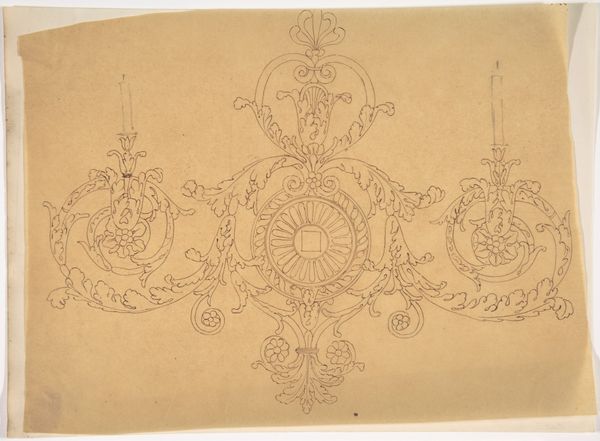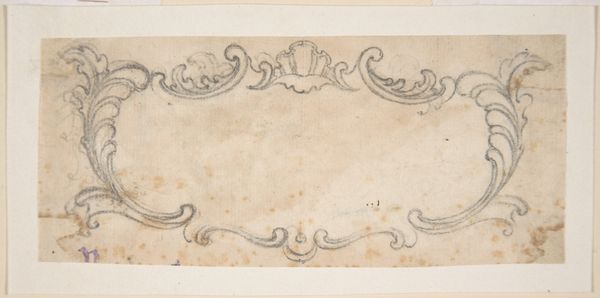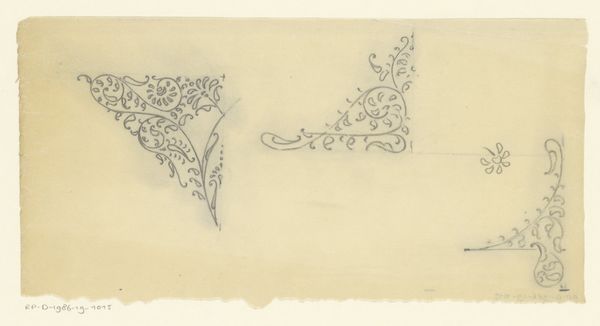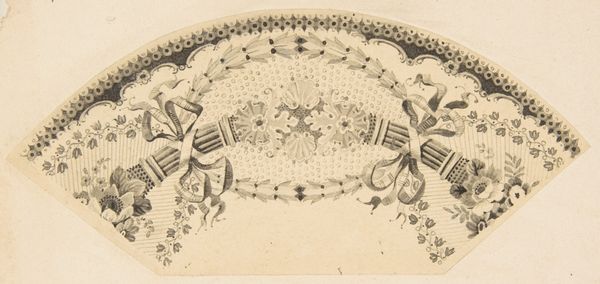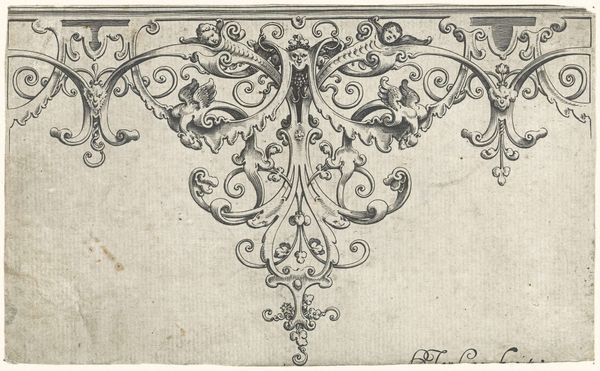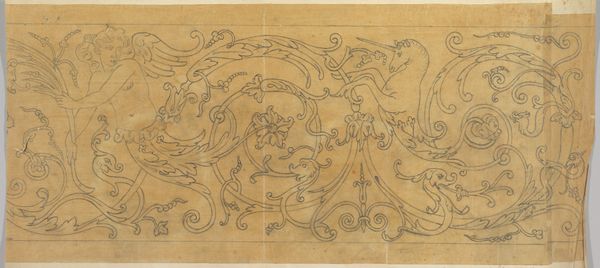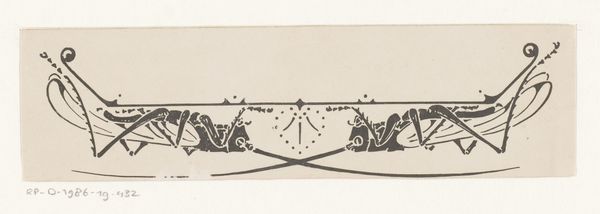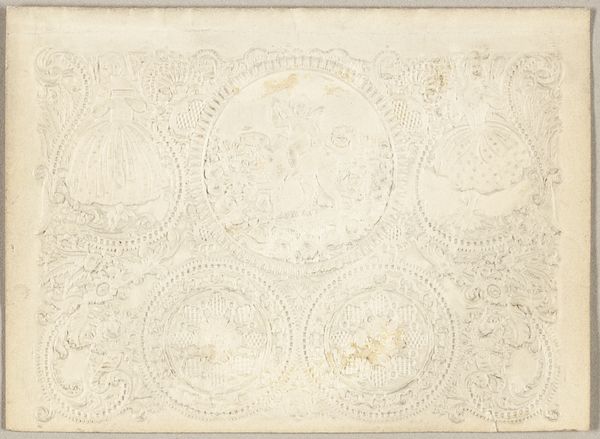
Design for Ceiling, either for 13 Berners Street, Westminster, London, or Whitton Park, Middlesex 1765 - 1766
0:00
0:00
drawing, print, architecture
#
drawing
#
neoclacissism
# print
#
geometric
#
decorative-art
#
architecture
Dimensions: sheet: 8 9/16 x 12 1/16 in. (21.8 x 30.6 cm)
Copyright: Public Domain
Curator: Looking at this architectural study, what immediately springs to mind? Editor: The muted grays and elegant scrollwork give me a sense of restrained power—it’s decorative, undeniably, but also imposing, as if silently reminding you of the social hierarchy it’s designed to adorn. Curator: That's insightful. What we are examining is "Design for Ceiling, either for 13 Berners Street, Westminster, London, or Whitton Park, Middlesex" crafted around 1765 by Sir William Chambers. Note how neoclassicism blends with decorative arts in this drawing. Editor: Chambers worked during an era deeply implicated in colonial expansion and its wealth. These spaces, meticulously designed, reinforced ideas about civilized dominion. Curator: Absolutely. Notice the geometric precision overlaid with delicate floral and portrait details. This is visual rhetoric, evoking order, reason, and, inevitably, empire. The rosettes are rendered perfectly. It almost feels cold, a statement of power and prestige through flawless craftsmanship. Editor: Yet that craftsmanship relies on a system that exploits labor. The visual harmony masks deeper socio-economic tensions that supported such displays of affluence. Even the choice of a ceiling design is telling; wealth gazes down. Curator: And also upwards toward the divine right? This ornament references centuries of power made newly available through artistic innovation and classical references. Note also the circular portraits or cameos; these medallions assert identity through portraiture. Editor: Do these reinforce particular identities, bolstering those already in positions of authority while marginalizing others? I am interested in what kind of power they reinforce through their placement in a domestic interior and the stories such ornamentation tells and suppresses. Curator: That interplay, the beautiful masking uncomfortable truths. Editor: Exactly, design reflecting and participating in power relations of 18th-century British society.
Comments
No comments
Be the first to comment and join the conversation on the ultimate creative platform.
